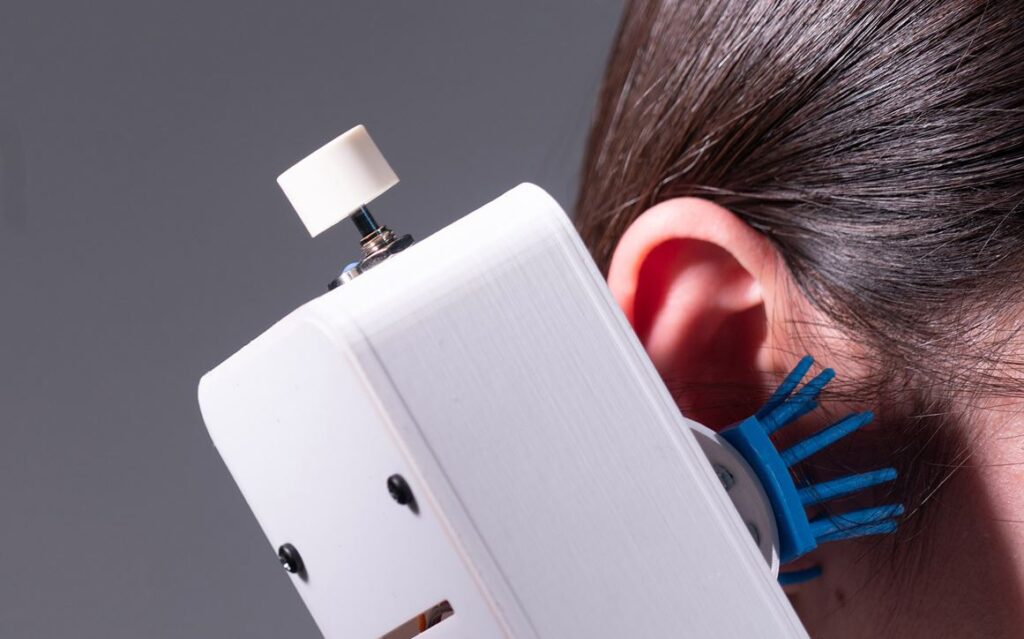Students at the Royal College of Art, Sandeep Hoonjan and Xianzhi Zhang, designed and built Feel the Conversation, a two-device system that allows people to experience physical sensations while talking on the phone.
The idea was born to “get closer” to users who are distant, perhaps on occasions such as those related to the Coronavirus pandemic, which has forced many people to separate.
How Feel the Conversation works
The operation of the machine is quite simple: they are two devices that connect to the phone and translate into tactile stimuli the conversation between users, based on intonation and volume.
Both handsets are in fact equipped with a brush and a silicone tongue, which allow to communicate different sensations.
The vertical movement of the silicone hangers is an enhanced version of the vibration of a smartphone, the designers explained. According to the team that designed the device, the sensations that the instrument is able to communicate are, at the same time, exciting and pleasant.
For this reason, Hoonjan and Zhang designed the additional silicone language to offer something more “recognizable” and human.
How to use the phone with your tongue
When connected to a phone, the device records the user’s speech with a built-in microphone. Peaks are then detected in real time to determine the pitch of what is being said and the volume of the voice.
This is then mapped and transformed into an upward or downward movement of your partner’s silicone phone accessories: a loud voice generates stronger movements while whispers cause shorter movements.

A speech in which the pitch changes quickly causes fast vertical movements; a calmer way of speaking generates slower movements.
Although Feel the Conversation was designed prior to the Coronavirus outbreak, Hoonjan and Zhang received a boom in requests for the unique accessory, precisely because of the spacing measures that were put in place following the pandemic.
“Sending audio through the phone is not enough,” Hoonjan explained. “So we looked for another way to express in a fun way the feeling of a conversation between people, who maybe don’t even speak the same language, don’t share cultures, or simply haven’t had physical contact for a while.
“Many tactile devices on the market didn’t satisfy us, especially those based on vibrations: we wanted something more intimate and with a wider range of sensations”.
“Users of Feel the Conversation phones reported feelings of intense intimacy with their partners, despite the lack of real contact or linguistic or cultural similarities,” Hoonjan added.
The current models can work with cables up to 100 meters long without the need for amplification. However, as the signal is digital, it can be adapted to any modern telecommunication method. All audio processing takes place before the signal is sent, so only a very small amount of data is transmitted to send a tactile message.
In addition, because the data is in such a simplified form, it can be sent via USB, WiFi, Bluetooth or any other common method of digital data transfer.
As the designers explain, they are currently developing a wireless model that would work via the Internet using existing telephone networks, just like a mobile phone, to connect people living in different countries.
The team is also working on a model that can be connected to desktop computers and laptops.